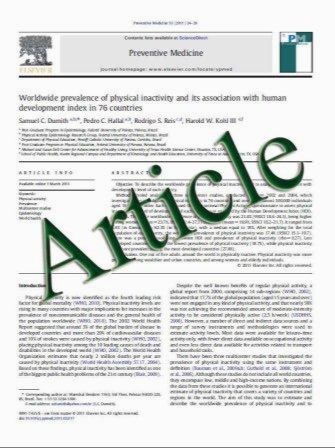Prevalence of BRCA1/2 mutations in sporadic breast/ovarian cancer patients and identification of a novel de novo BRCA1 mutation in a patient diagnosed with late onset breast and ovarian cancer: implications for genetic testing
- نوع فایل : کتاب
- زبان : انگلیسی
- مؤلف : Kim De Leeneer Ilse Coene Brecht Crombez Justine Simkens Rudy Van den Broecke Alain Bols Barbara Stragier Ilse Vanhoutte Anne De Paepe
- چاپ و سال / کشور: 2011
Description
In order to adequately evaluate the clinical relevance of genetic testing in sporadic breast and ovarian cancer patients, we offered comprehensive BRCA1/2 mutation analysis in patients without a family history for the disease. We evaluated the complete coding and splice site regions of BRCA1/2 in 193 sporadic patients. In addition, a de novo mutation was further investigated with ultra deep sequencing and microsatellite marker analysis. In 17 patients (8.8%), a deleterious germline BRCA1/2 mutation was identified. The highest mutation detection ratio (3/7 = 42.9%) was obtained in sporadic patients diagnosed with breast and ovarian cancer after the age of 40. In 21 bilateral breast cancer patients, two mutations were identified (9.5%). Furthermore, 140 sporadic patients with unilateral breast cancer were investigated. Mutations were only identified in patients diagnosed with breast cancer before the age of 40 (12/128 = 9.4% vs. 0/12 with Dx[40). No mutations were detected in 17 sporadic male breast cancer and 6 ovarian cancer patients. BRCA1 c.3494_3495delTT was identified in a patient diagnosed with breast and ovarian cancer at the age of 52 and 53, respectively, and was proven to have occurred de novo at the paternal allele. Our study shows that the mutation detection probability in specific patient subsets can be significant, therefore mutation analysis should be considered in sporadic patients. As a consequence, a family history for the disease and an early age of onset should not be used as the only criteria for mutation analysis of BRCA1/2. The relatively high mutation detection ratio suggests that the prevalence of BRCA1/2 may be underestimated, especially in sporadic patients who developed breast and ovarian cancer. In addition, although rare, the possibility of a de novo occurrence in a sporadic patient should be considered.
DOI 10.1007/s10549-011-1544-9 Received: 2 February 2011 / Accepted: 20 April 2011


